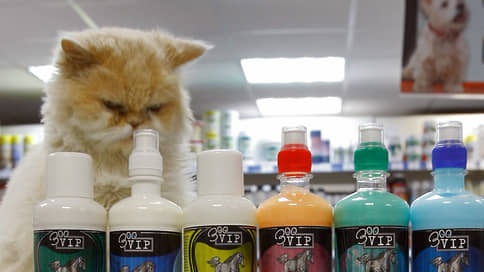Not in cat food – Newspaper Kommersant No. 49 (7494) of 03/23/2023
[ad_1]

Purchases for future use in 2022, a reduction in the range and overall savings led to a decrease in sales of pet products in the Russian Federation. In the first two months of the year, spending in the category decreased by 19-26% with a decrease in the number of purchases and the average check. But market participants are counting on growth at the end of the year, including due to an increase in imports from China, India and Turkey.
Russians are cutting spending on pet products, according to payment services data. According to CloudPayments, in January-February 2023 compared to January-February 2022, the turnover of such goods on online platforms decreased by 26%, the number of transactions – by 10%, and the average bill decreased by 18%, to 5.8 thousand rubles. rub.
According to Tinkoff Data, in January-February 2023, the amount of spending on specialized stores and websites in the category of pet products decreased by 19%, the number of purchases – by 15% year-on-year. The Check Index of the online cash register operator OFD Platform noted a decrease in the number of purchases in the category over this period by 15% year-on-year.
According to NielsenIQ, in January-February 2023, dog food sales in physical terms in retail chains decreased by 7.9% year-on-year, cat and dog treats sales decreased by 11.7%. Sales of cat food grew by 1.3% year-on-year. In the Beethoven, Le’Murrr, Zoozavr networks (part of the Detsky Mir Group of Companies), they did not answer Kommersant’s questions.
Kirill Dmitriev, president of the National Association of the Pet Industry, says that some Russians may still have stocks of pet food from last year, made during purchases for the future.
Tatyana Kolchanova, General Director of the Union of Animal Business Enterprises, confirms that in the first months of 2022 there was a boom in demand, primarily for imported feed. The purchases provoked both consumer fears of shortages after the outbreak of hostilities in Ukraine, and restrictions by the Rosselkhoznadzor on the supply of foreign feed, she said.
In mid-March, the Rosselkhoznadzor reported that pet food was imported into the Russian Federation with a composition that does not correspond to the composition declared on the label, as well as containing GM components. Inspections of manufacturers in France, Italy and Spain, conducted in 2023, showed that the veterinary services of these countries are not taking corrective measures, the Rosselkhoznadzor noted.
Kirill Dmitriev adds that difficulties with importing ready-made feeds and raw materials for them have led to a reduction in the range. According to him, in Russian pet food in the economy segment, imported components account for about 5%, and in the premium segment – up to 30-40%. In the context of the general consumer economy, some pet owners are also switching their pets to cheaper food or even natural food, Mr. Dmitriev notes. Tatyana Kolchanova also attributes the decrease in the average check to the reduction in the range of dietary and medicinal feeds, the cost of which was among the highest in the category.
According to the Zooinform industry portal, at the end of 2022, the turnover of the pet products market grew by 25%, to 330 billion rubles. year by year.
Violating the overall picture of the beginning of 2023 is the sale of pet products on large marketplaces that are growing rapidly. So, in January-February, they almost doubled on Ozon, and on Wildberries they increased by 88% year-on-year. Wildberries added that about 69% of sales come from Russian feed, the share of which in turnover increased by 3 percentage points over the year.
However, the difference in trends is primarily due to the low result base of marketplaces. So, according to NielsenIQ, in general, all online sales of pet products in Russia account for only 9% of the market.
At the same time, all distribution channels expect that the market situation will improve during the year. According to Tatyana Kolchanova, total sales of pet products in 2023 may show an increase. Some local producers, she explains, have opportunities for more active development, and in the face of reduced supplies from European countries, it is planned to increase feed imports from China, Turkey and India, especially in the dietary segment, which is currently in short supply.
[ad_2]
Source link





